Chris Parkin reviews the Savage 110 Apex Hunter XP in .223 rem - an appealing off-the-shelf entry level foxing combo!
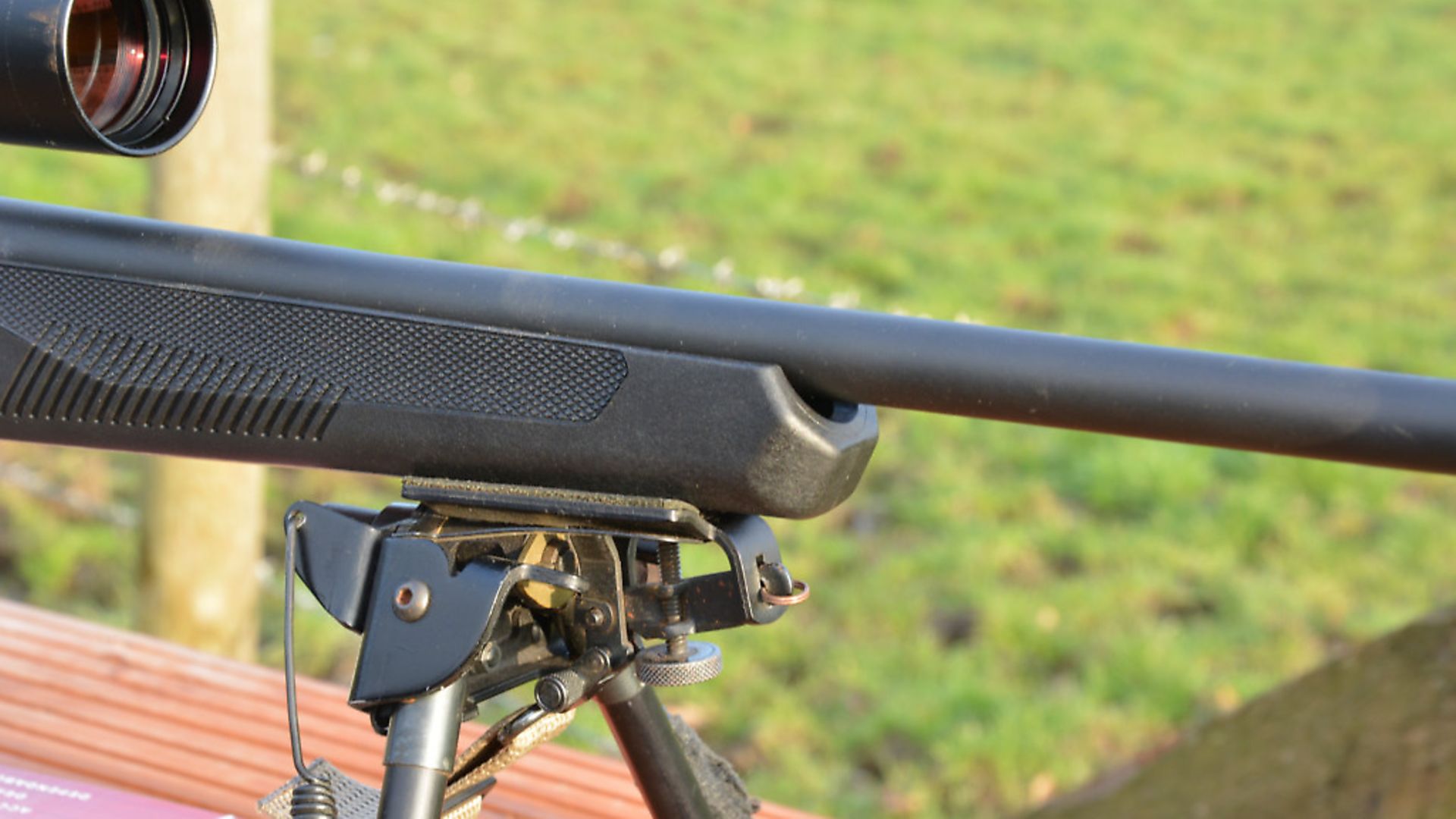 credit: Archant
credit: Archant
SAVAGE 110 APEX HUNTER XP IN .223 REM | REVIEW IN BRIEF
PROS: Arrives bore sighted and ready to zero; Crisp trigger pulls; Free floating barrel; Smooth bolt stroke; They mounted the scope straight!
CONS: Short reach to trigger wearing gloves invited the possibility of the trigger going into `safe mode’ which sounds like a `dead man’s click` but which is in fact just the firing pin safely disengaging
OPINION: Savage know how to build a simple straight-shooting rifle, Although the reach to trigger and finger positioning could do with slight improvement.
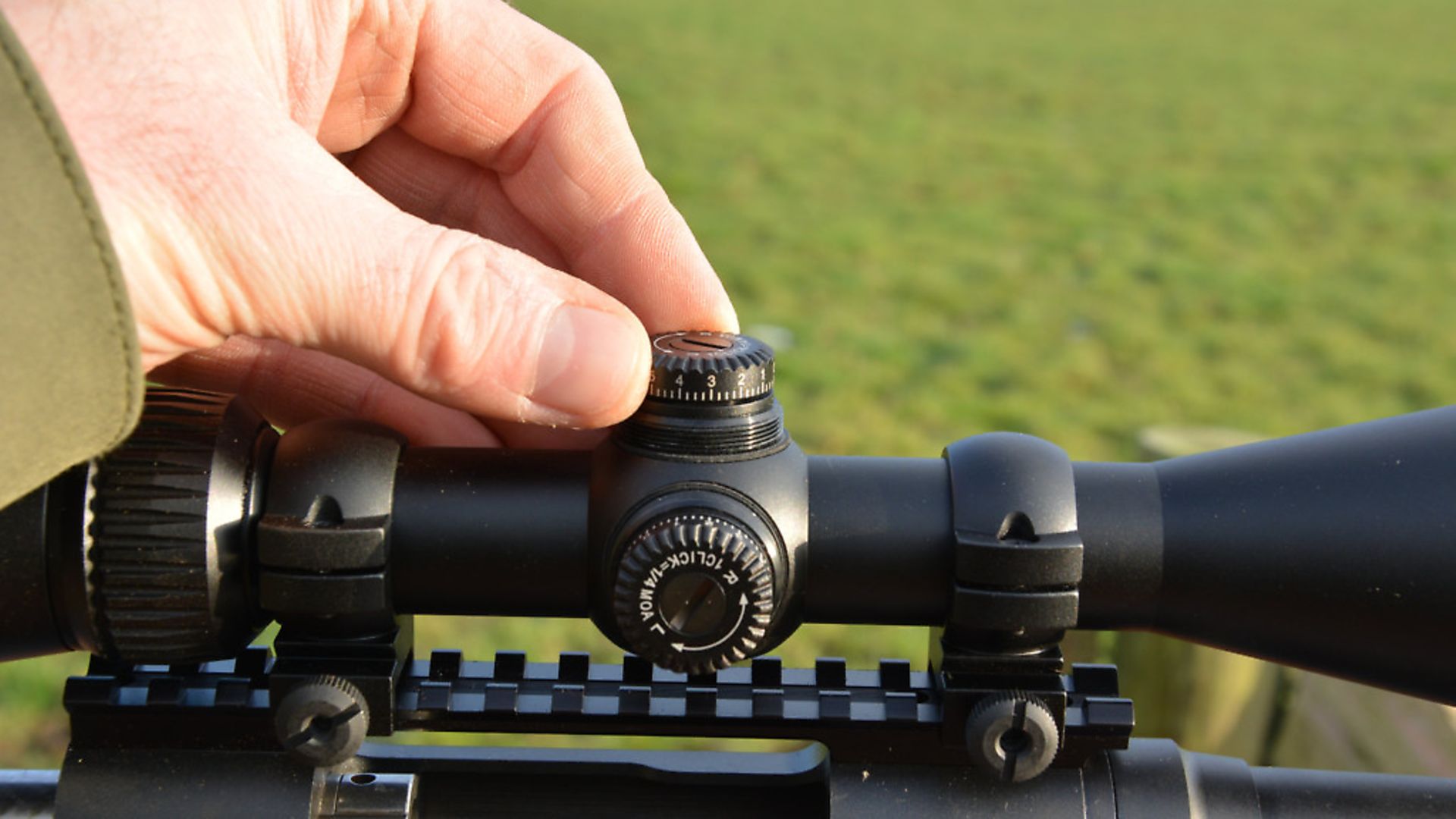 credit: Archant
credit: Archant
SAVAGE 110 APEX HUNTER XP IN .223 REM | IN-DEPTH TEST & REVIEW
I think it’s fair to say I like to keep budgets realistic where possible and I’m never afraid to review more economically priced rifles or indeed package deals. Savage have teamed up with Vortex to supply one of their Apex XP rifles with a Crossfire II scope in 3-9x50 as a one-stop deal with rings and rail to get any new rifleman shooting straight from the box.
This package is available in .204, .223, .22-250. .243, 6.5 Creedmoor and .308 in the UK, all popular calibres to cover most needs. The rifle arrives bore sighted and I have to say, the scope is well set up with all screws correctly tensioned and the reticle level in the scope, not something that is always the case on preprepared rifles.
Edgar Brothers supplied four types of Hornady ammunition for the review at varying price points from economical 55gr soft-points through to 68gr BTHP match ammo, as well as 53gr V-Max Superformance and 55gr V-Max Varmint Express (a particular favourite of mine) to ensure most options were covered.
The muzzle provides a ½”x20 thread for a sound moderator addition to its slim 15mm diameter profile, with a straight outward taper toward the action 20”/510mm behind it. All metalwork is a matt-blacked smooth finish, which has so far resisted any surface corrosion from the condensation that forms every time it is brought inside at this time of year. A thread cap is provided for those who prefer not to use a moderator and the machining appears perfectly finished on the flat crown.
Savage use a barrel nut to ensure headspacing for the 110’s cylindrical action, a twin-lugged, push-feed bolt with sprung plunger ejector and left side extractor claw. Bolt lift to cock and cycle the action is performed via a 70mm handle capped with a 20mm knob arcing through 90°; all cyclical motion is smooth.
Magazine capacity is listed as four rounds, although five went in without any problem, plus an additionally chambered +1 if required. rounds can be chambered slowly and quietly with the bolt if the situation demands, with a single cartridge dropped into the ejection port having about a 75% chance of sliding into the chamber without fingertip shuffling as the bolt is closed. Perhaps not an everyday requirement, especially not in .223, but this can be handy in a back-up situation. Knurling is featured on the upper (not lower) surface of the bolt knob to assist grip when closing the action. Automated ejection force varies slightly with bolt speed so you can decide how far to fling spent cases.
Savage’s bolts offer a bolt face change capability and this one’s 83mm stroke length on the scaled short action is perfect for the diminutive .223 case. The tang safety catch operates quietly under the firing hand thumb, forward for fire, middle safe with bolt operation and rear to lock the bolt as well.
A user adjustable AccuTrigger is slung below the action with inner safety blade to ensure no accidental discharges while providing light crisp trigger pulls. I found this particular trigger perfectly crisp with a 915g breaking point, easily judged with great consistency from the bench.
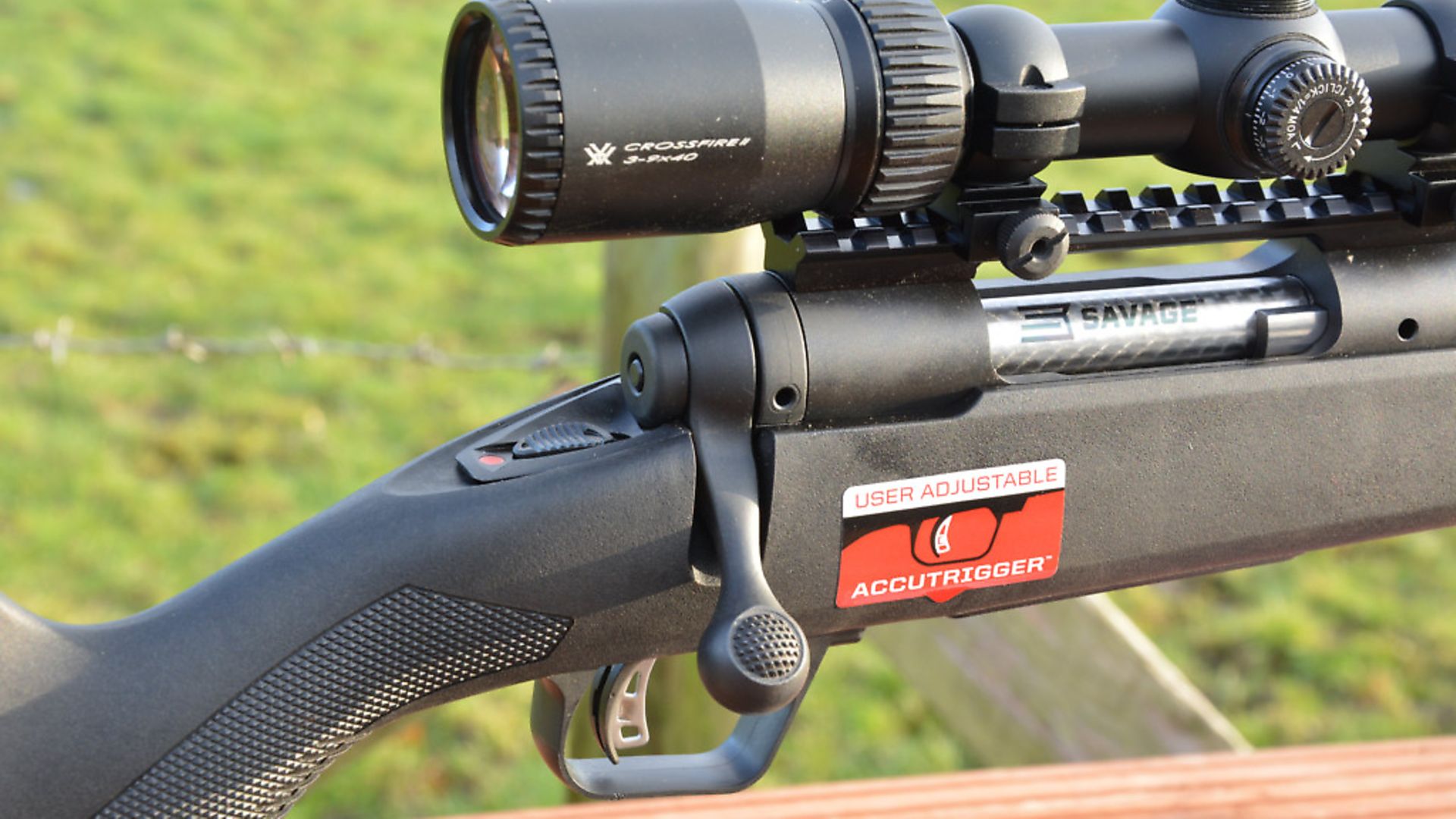 credit: Archant
credit: Archant
Trigger technique
I have to admit that with gloves on and shooting in more improvised styles and from sticks etc, it was prone to a ‘dead man’s click’, the folding bulk of the glove’s index finger actuating the black trigger blade prior to the safety lever being fully engaged. You could say this is operator error and not the rifle’s fault, but I found myself having to really concentrate on trigger operation wearing just light gloves to avoid the problem.
This is somewhat exacerbated by the short length of pull and reach to trigger from the grip; bringing the hand closer makes the trigger finger more likely to project further through the guard with the knuckle nearer the blade rather than the ideal position which places the finger pad centrally on the blade. In the end, I found myself erring more toward fingertip control to ensure consistency, certainly in the cold, which was a shame.
The rifle was straightforward to zero and the EGW zero inclination Picatinny rail makes the addition of other scopes or night vision straightforward, something I did almost immediately for winter foxing forays.
The Crossfire II has a BDC reticle and ¼” clicks under the capped dials. These are functional, but once zeroed, I’d leave them well alone as the clicks are a bit soft and not easy to dial or count reliably. In fairness, image quality was bright enough with a sharp picture and fast focus on the reticle for hunting at varied mag levels.
The polymer stock is tactile with plenty of tactile panels on the facetted forend and open radius, it’s 13.75”/350mm length of pull feels compact and in proportion throughout. Spacers are available for the recoil pad and this is thankfully homogenous without any hard spots, and although negligible in .223, should prove sufficiently absorbent on the harder recoiling calibres, overall it’s quite soft, but not spongey.
The slim cheekpiece slopes away gently from parallel with the bore line towards the recoil pad’s heel and I get the feeling the gun is designed for smaller shooters, with the flip side being it makes for a light, fast handling foxing rifle, which I found quite pleasant in use.
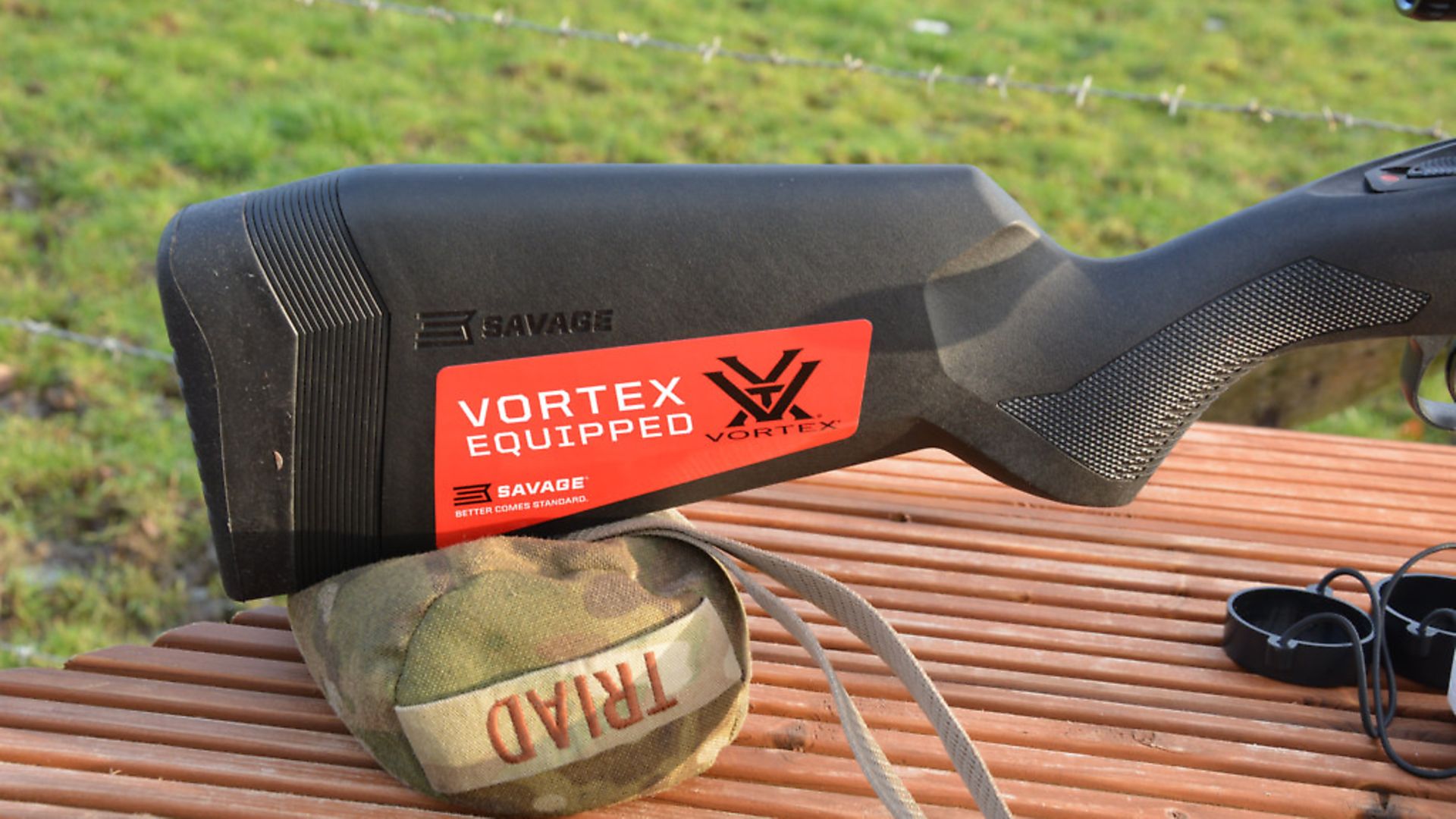 credit: Archant
credit: Archant
Ammo on test
Performance on target from the ammunition showed the 68gr Match to be the best paper puncher, particularly suiting the 1 in 9” twist of the barrel with sub-MOA performance from five-shot groups. The premium 53gr and 55gr V-Max hunting ammunition were reliable with MOA performance of 27mm for three rounds at 100.
The 55gr soft-points lagged a little with groups opening past the 35mm mark, yet still perfectly fox-capable. Velocities from the barrel were sprightly, peaking at 3190 fps from the 53gr V-Max Superformance ammunition down to 2708 fps with the 68gr Match fodder.
This barrel is shorter than those used for factory measurements yet still quicker than my own 20” .223 barrel, as well as a couple of other .223s I use regularly, so I’m satisfied. Savage’s close headspacing tolerance from the barrel nut enables long brass life with minimal case growth for reloaders. All primers showed strong strikes and no damage to any necks or bullets during the chambering process.
After the run in of the first hundred rounds, the gun showed improvement. It’s never going to be a target rifle, but fundamentally, with the maximum 9x scope supplied, it is a competent hunting rifle, with a strong stock and forend avoiding any intermittent barrel contact regardless of careless handling.
Sling studs are well anchored. Shot from a bipod with moderator, it’s a very handy rifle, equally dependable from sticks when night shooting, as long as I remembered to prevent gloves fouling the main trigger blade. I trusted the gun enough to use it for foxing and another review with night vision PARD 008 scope – I learned long ago to be cautious about pairing two pieces of review kit before at least one is confirmed as dependable beforehand.
Savages are straightforward tools and rarely glamourous but I like the smooth operation of the bolt and thought the compound structure of the detachable box magazine with a polymer lower and steel feed lips was excellent, allowing silent insertion and removal without any snagging as its tapered profile self-aligns into the mag well with a silent frontal release catch.
Bolt release uses a plunger at the front of the guard with simultaneous trigger actuation and also conceals the rear action screw. This shows internally neat injection-moulded structure with pillars to prevent stock compression, which produced zero action stress.
This is a typical Savage – a well-structured tool to do a job; not luxurious, but a gun that will take the knocks and bumps in the real world without any fuss or panic. Just be aware of the trigger fouling when wearing gloves!
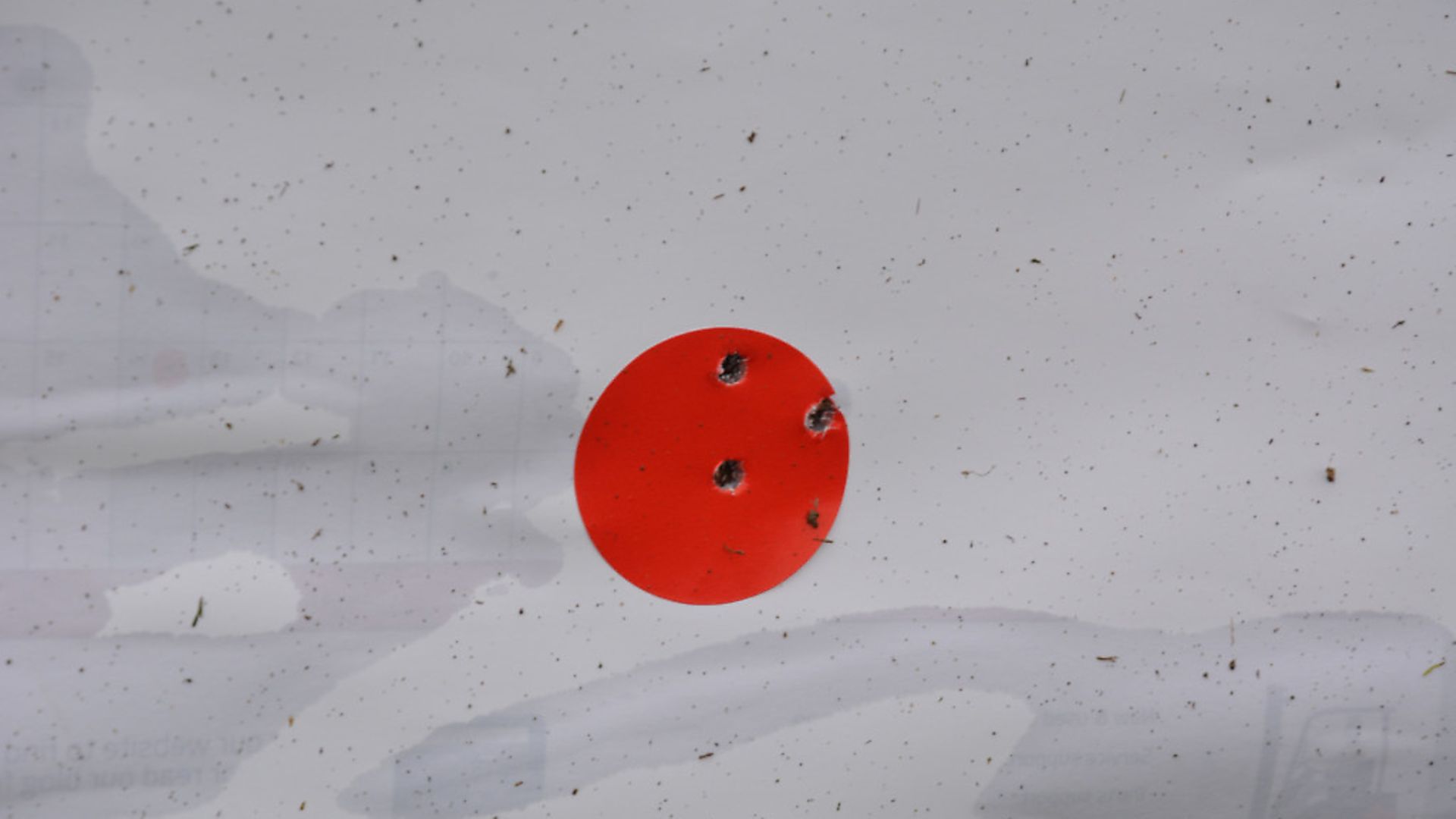 credit: Archant
credit: Archant
SAVAGE 110 APEX HUNTER XP IN .223 REM | TECH SPECS
Action: Bolt
Barrel Colour: Blacked
Barrel Finish: Matt
Barrel Length: 20”/510mm
Calibres: 223 on test (204, 22-250, 243, 6.5CM and 308 also available)
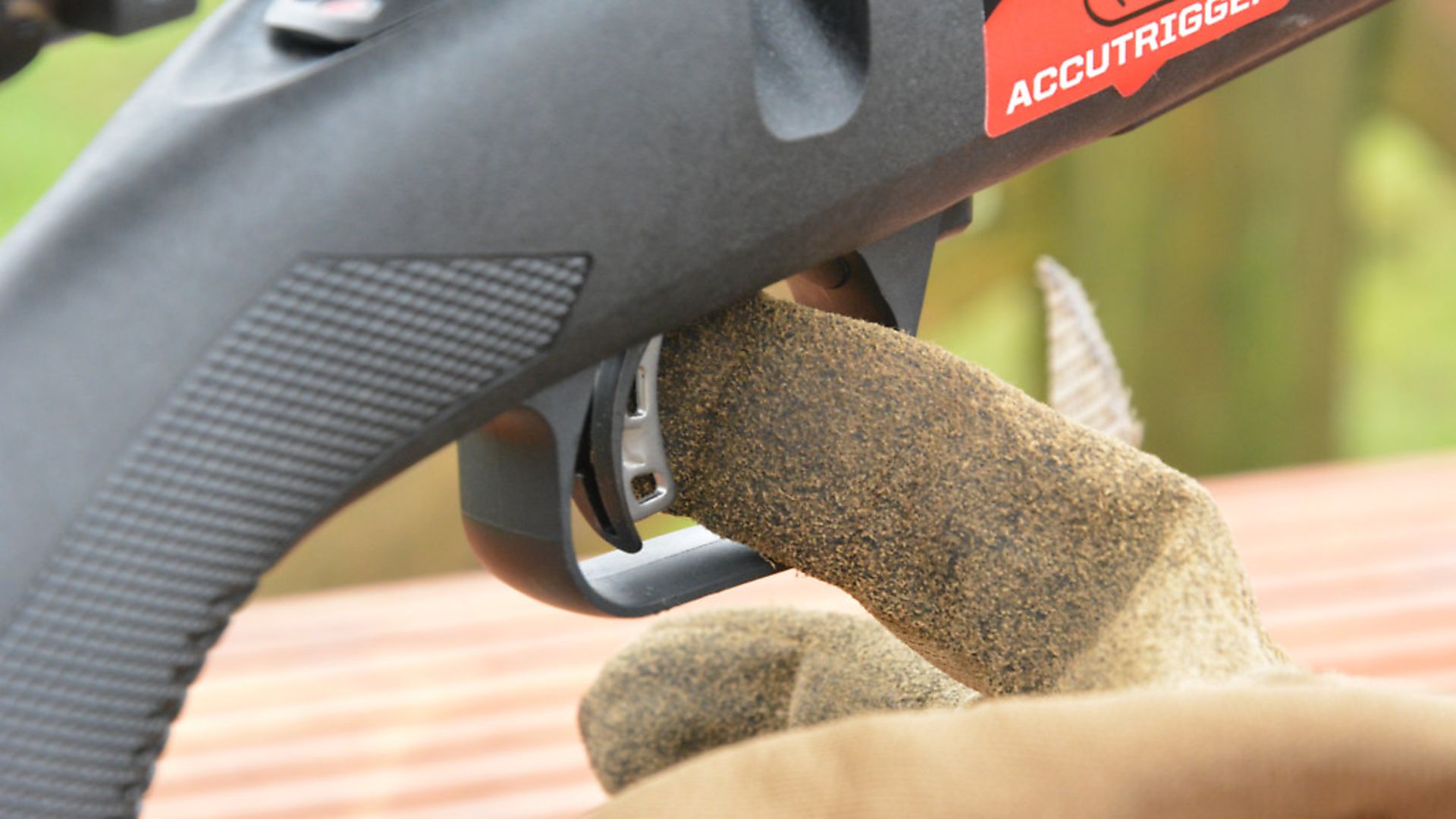 credit: Archant
credit: Archant
Length of Pull: 13.75”/350
Trigger: Single stage AccuTrigger measured at 915gr
Magazine: 5 round Detachable Box Magazine, not 4 as stated
Overall Length: 40.25 / 1015
Rate of Twist: 1 in 9
Stock Material: Synthetic
Weight: 7.7lbs/3.2kg
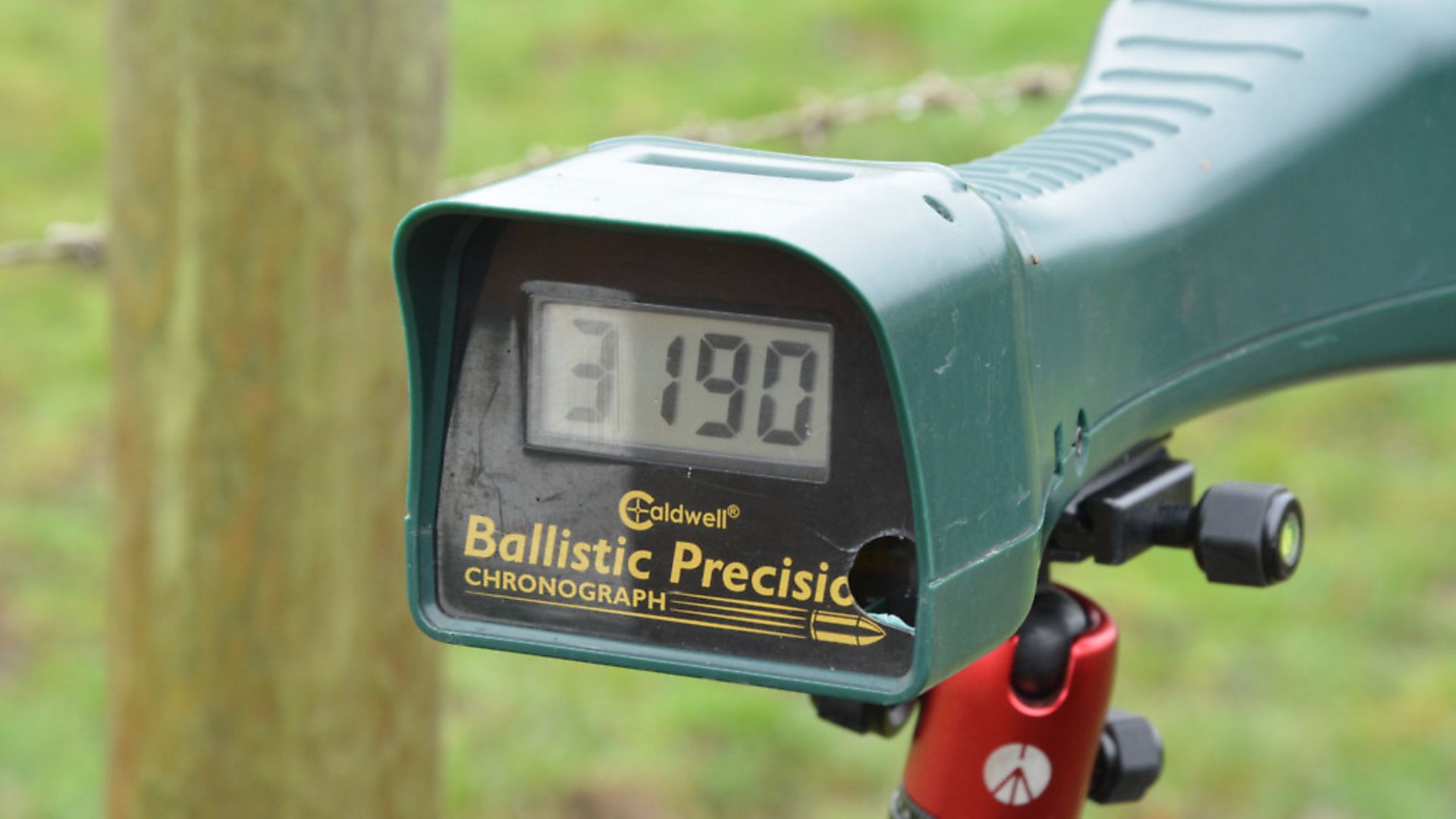 credit: Archant
credit: Archant
Recommended retail price: £940 rifle package inc. scope and mounts
Ammo used:
55gr Hornady SP Ammo is £880 per thousand
68gr BTHP Match ammo is £1200 per thousand
Contact: Edgar Brothers 01625 613177
Web: www.edgarbrothers.com
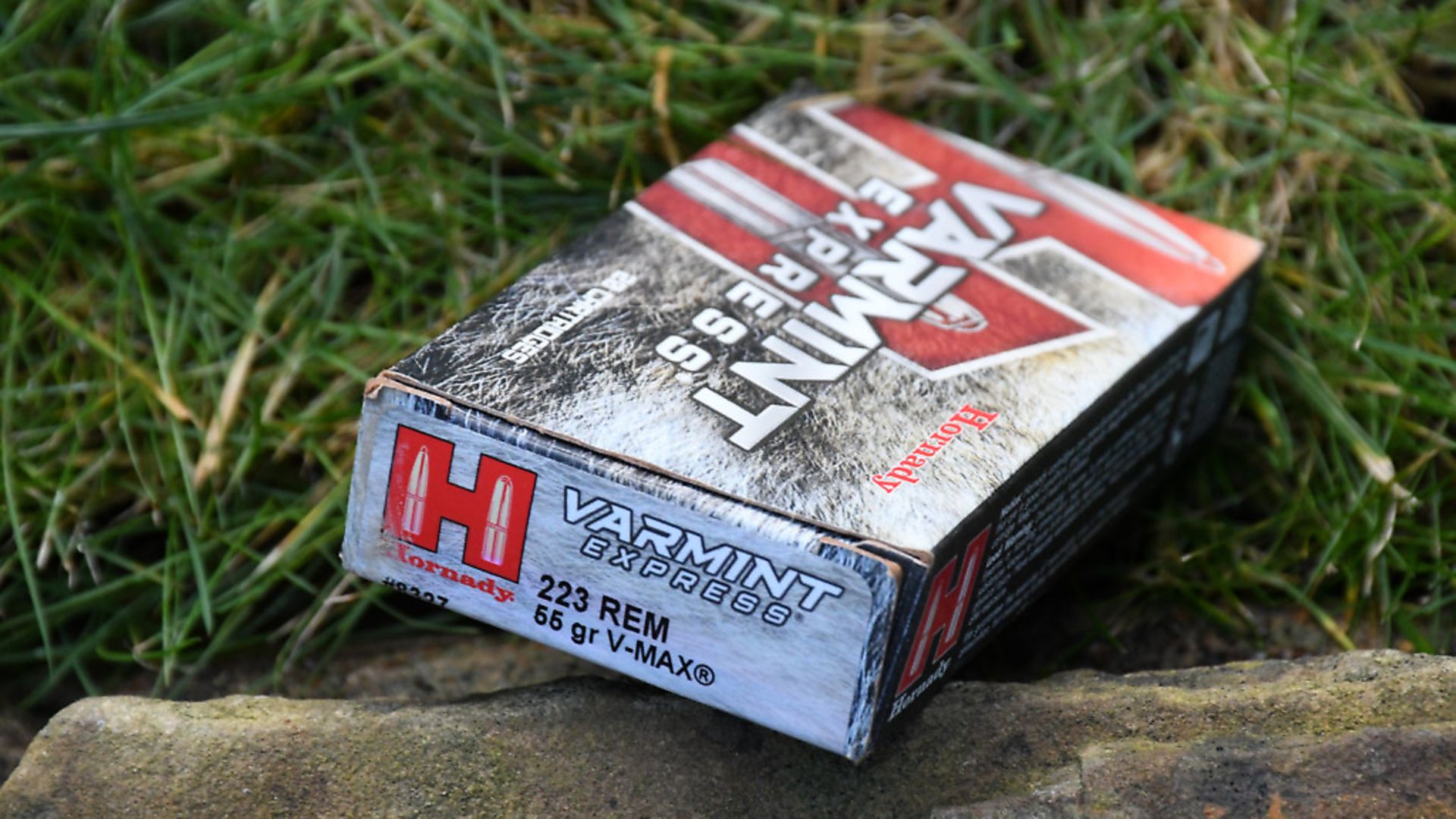 credit: Archant
credit: Archant
 credit: Archant
credit: Archant
 credit: Archant
credit: Archant